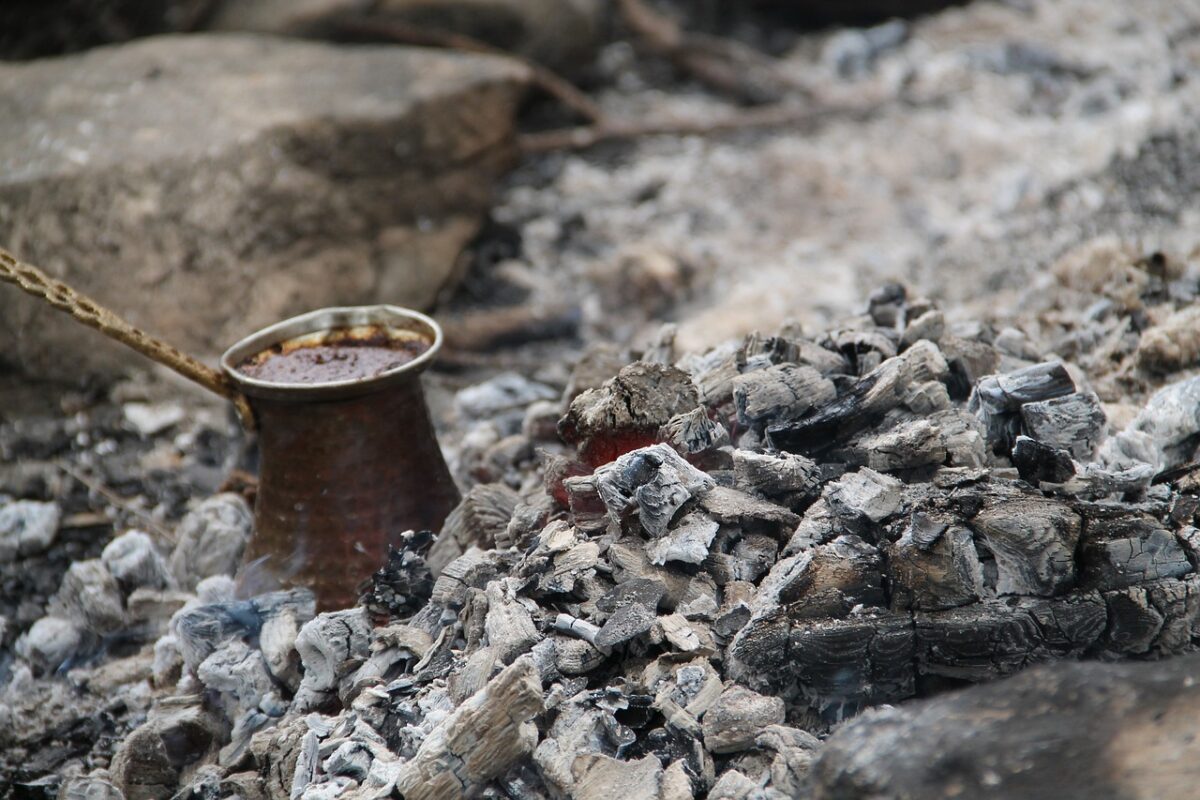Before Yugoslavia fell apart and the situation in the Balkans worsened, the coffee was called “Turkish coffee.”
On a side note, like in Italy, there is a way to order a cup in Serbia if you want to pretend you’re a local: “Oj majstore, daj dve Turske, molim te”. Or even better, “Dve Turske, molim te” if you order before being asked.
Otherwise, it goes like this: “Dobar dan, sta pijemo? Dve Turske i dve sljive, molim te.”
Now you know.
Like the Balkans, the naming convention eventually fell apart: Nowadays, Serbia has “Serbian coffee (or domaća kafa / домаћа кафа)”, Greece has “Greek coffee”, Bosnia has “Bosnian coffee” and Turkey has “Turkish coffee.” I don’t know about Croatia, Slovenia, and the other countries. Truth be told, some of the coffees differ slightly in how they’re prepared. Is it enough of a differentiating factor to deserve a different name? It is open to discussion.
An urban legend tells how coffee – and the croissant – arrived in the West. When the Turks were defeated, they retreated, leaving their belongings: cezve (1 & 2), the rahat lokum (ratluk or Turkish delight), the coffee, and the crescent-shaped bread that Marie-Antoinette took back to Paris. Vienna kept the coffee and created cakes to accompany it, while the French perfected the crescent loaf and created the croissant.
Let’s set the record straight. Croissants are Viennese (hence viennoiseries in French) and were created to celebrate the Habsburgs’ defeat of the Ottoman Empire at the Battle of Vienna in 1683. The crescent shape is part of the Ottoman flag. Rumour has it that Marie Antoinette, born in Vienna, introduced the croissant to Paris in 1770 before the French Revolution. Still, croissants only appeared in a widespread way in France in the mid-19th century, the first description of a Viennese baker in Paris being in 1838.
Long story short, here is a link to help you get going with Turkish/Bosnian/Greek/Serbian coffee.
And here is a, not the recipe:
Step 1.
Add cold water to the cezve by using your cup as a reference.
Add a big-ish teaspoon of coffee per cup, two if you like it strongSugar is optional, but use one small teaspoon per cup as the basis.
Add it during the preparation, not after.
Step 2.
Put your cezve on the stove, medium-high
Don’t mix, stir, or be impatient.
Let the coffee float on the surface, and once it starts sinking, stir it several times
Put the flame on low
Step 3.
Watch the cezve; it shouldn’t boil and the top should look foamy.
If it’s getting too hot, move it off the flame
Step 4
Use the teaspoon to put a bit of foam in every cup, then serve.
Let the coffee in the cup rest for the grains to sink.
Enjoy.






